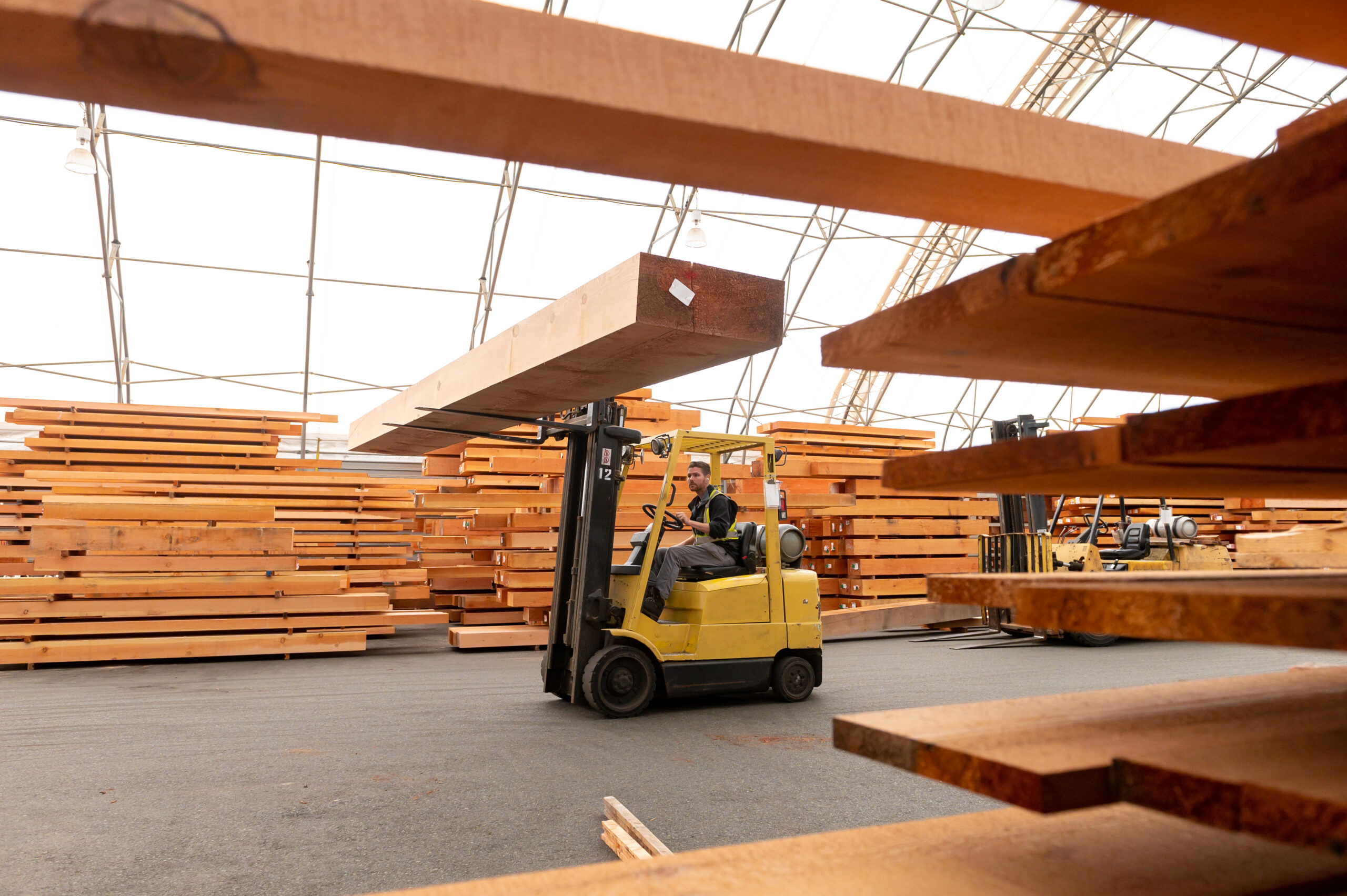In a world increasingly focused on sustainability and efficiency, mass timber emerges as a transformative material for the construction industry. The white paper 10 Advantages of Building with Mass Timber outlines why this material is gaining popularity among architects, developers, and policymakers. Here’s a concise exploration of these advantages, underscoring the potential of mass timber to reshape the way we build.
Environmental Impact: Reducing Carbon Footprint
Concrete, a staple in construction, contributes significantly to global carbon emissions. Mass timber, by contrast, is a renewable material that actively stores carbon. For every cubic meter of timber used, roughly one tonne of CO₂ is stored, offering an immediate climate solution. Sustainable forestry practices ensure forests continue to grow, further capturing CO₂.
Economic Viability: Cost-Effective Construction
Contrary to misconceptions, mass timber is often cost-competitive with traditional materials. Its lightweight nature reduces foundation requirements, while prefabrication streamlines construction timelines. Developers see quicker returns on investment through faster builds, reduced labor, and fewer on-site deliveries.
Construction Efficiency: Building with Precision
Prefabricated timber components simplify construction. Pre-cut, coated, and fitted with lifting devices, these elements allow for faster assembly. An entire building floor can be installed in a single day, minimizing downtime and enabling year-round construction in varied climates.
Enhanced Design Flexibility
Enhanced design flexibility is one of the key advantages of Mass Timber construction. Its high strength to weight ratio allows for the creation of innovative architectural forms including large open spaces, retrofitting urban structures, and providing intricate design options without compromising structural integrity. Mass timbers prefabrication and modular capabilities enable precise customized components that streamline construction, while supporting unique aesthetics, biophilic and functional goals. This versatility makes it a preferred choice for architects and developers seeking substantial – creative solutions in modern building design.
Sustainability Regulations: Future-Ready Compliance
Countries worldwide are mandating sustainable construction practices to reach net-zero targets. Policies that specify the use of biobased material requirements, reflect a growing shift towards eco-friendly materials. Mass timber’s compliance with fire safety, seismic resistance, and durability standards makes it a practical choice for meeting building and policy regulations.
Health and Wellbeing: Biophilic Benefits
Studies reveal that timber interiors improve mental health, increase productivity, and enhance recovery rates in healthcare settings. Wood’s ability to regulate air quality and reduce volatile organic compounds makes it an ideal material for schools, hospitals, and office spaces.
Construction Site Advantages: Safer and Cleaner
Timber construction sites are quieter, cleaner, and safer. Reduced dust and noise benefit both workers and nearby communities. Off-site prefabrication minimizes on-site cutting and assembly, lowering the risk of injuries and ensuring consistent quality.
Aesthetic and Sensory Appeal
Mass timber creates visually stunning and tactile spaces. Its natural aesthetics, combined with its structural versatility, allow for the creation of iconic architectural landmarks. Beyond looks, wood’s insulating properties also enhance indoor comfort and energy efficiency.
Adaptability for Mixed-Use and Long-Term Projects
Timber is ideal for projects requiring future adaptability. Its modular nature allows for easier renovations and extensions, reducing the need for demolition. This flexibility supports the growing trend of circular economy practices in construction.
Accelerating the Transition to Renewable Construction
As the only renewable material capable of replacing concrete and steel in mid-to-large-scale projects, mass timber is at the forefront of a construction revolution. From skyscrapers to single-family homes, its applications are virtually limitless.
Conclusion: Timber for a Sustainable Future
The shift to mass timber is not just about choosing a material; it’s about adopting a mindset that values sustainability, efficiency, and innovation. As construction stakeholders face mounting pressure to build responsibly, mass timber offers a clear path forward. By embracing wood, the industry can achieve environmental, economic, and social gains that align with a greener future.
Whether you’re an architect envisioning a sustainable skyline or a developer seeking cost-effective solutions, the case for mass timber is compelling. It’s time to reimagine what’s possible and let wood shape the built environment of tomorrow.
Download the Whitepaper by StoraEnzo

